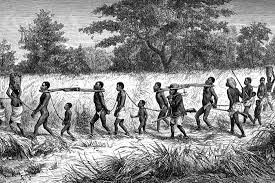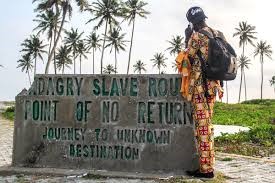In the annals of history, the echoes of human suffering reverberate through the tales of the Badagry slave trade, a dark chapter that unfolded along the shores of West Africa. Nestled on the coast of what is now Nigeria, Badagry bore witness to the harrowing trade that ensnared countless lives in its merciless grip.
The roots of the Badagry slave trade stretch back to the 15th century when European powers began to cast their covetous eyes on Africa’s abundant human resources. Traders from Portugal, Britain, France, and other colonial powers established forts and outposts along the coast, seeking to exploit Africa’s wealth through the brutal trade in human lives.
Badagry emerged as a pivotal node in this nefarious network, its strategic location making it a hub for the transatlantic slave trade. Traders exchanged textiles, firearms, and other commodities for enslaved Africans, marking the beginning of a tragic exodus that would reshape the course of history.
For countless Africans, the journey through Badagry marked the beginning of an odyssey fraught with peril and despair. Captured from their homes, villages, and kingdoms, they were herded like cattle to the slave markets of Badagry, where they awaited their grim fate.
From Badagry, the enslaved were ferried across the Atlantic in cramped, squalid conditions aboard slave ships bound for the Americas. The infamous Middle Passage, characterized by its brutality and inhumanity, claimed the lives of countless souls, leaving an indelible stain on the conscience of humanity.

The toll of the Badagry slave trade was staggering, measured not only in lives lost but also in the erosion of dignity, culture, and heritage. Families were torn asunder, communities decimated, and identities stripped away—all in the name of profit and power.
Yet, amidst the darkness, the flame of resilience burned bright. Enslaved Africans, bound by chains but not by spirit, found solace in acts of resistance, from covert rebellions to the preservation of cultural traditions passed down through generations. Their stories, though often obscured by the passage of time, bear witness to the enduring human spirit in the face of adversity.
Today, the remnants of the Badagry slave trade serve as poignant reminders of the horrors of the past and the imperative of remembrance. The slave markets, forts, and dungeons that once echoed with the cries of the oppressed now stand as solemn monuments to those who suffered and perished.

In Badagry and beyond, efforts are underway to commemorate and honor the memory of those who endured the horrors of slavery. Museums, memorials, and educational initiatives seek to ensure that the lessons of history are not forgotten, fostering dialogue, reconciliation, and healing in the ongoing quest for justice and equality.
The Badagry slave trade stands as a testament to the darkest impulses of humanity, a reminder of the enduring legacy of exploitation and oppression. Yet, it also bears witness to the resilience of the human spirit, the power of solidarity, and the capacity for hope in the face of adversity.
As we reflect on the lessons of the past, let us reaffirm our commitment to justice, dignity, and equality for all. May the voices of the enslaved echo through the corridors of history, guiding us toward a future built on compassion, understanding, and shared humanity.




